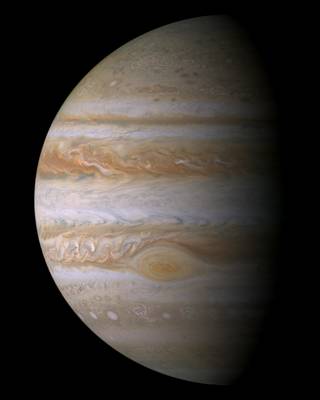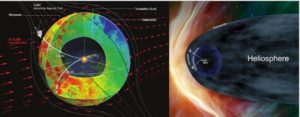
Caption: The Mars Pathfinder lander took this photo of its small rover, called Sojourner. Here, Sojourner is investigating a rock on Mars. Image credit: NASA/JPL-Caltech
On July 4, 1997, NASA’s Mars Pathfinder landed on the surface of Mars. It landed in an ancient flood plain that is now dry and covered with rocks. Pathfinder’s mission was to study the Martian climate, atmosphere and geology. At the same time, the mission was also testing lots of new technologies.
For example, the Pathfinder mission tried a brand-new way of landing on Mars. After speeding into the Martian atmosphere, Pathfinder used a parachute to slow down and drift toward the surface of the Red Planet. Before landing, Pathfinder inflated huge airbags around itself. The spacecraft released its parachute and dropped to the ground, bouncing on its airbags about 15 times. After Pathfinder came to a stop, the airbags deflated.
Before Pathfinder, spacecraft had to use lots of fuel to slow down for a safe landing on another planet. Pathfinder’s airbags allowed engineers to use and store less fuel for the landing. This made the mission less expensive. After seeing the successful Pathfinder landing, future missions used this airbag technique, too!
Pathfinder had two parts: a lander that stayed in one place, and a wheeled rover that could move around. The Pathfinder lander had special instruments to study Martian weather. These instruments measured air temperature, pressure and winds. The measurements helped us better understand the climate of Mars.
The lander also had a camera for taking images of the Martian landscape. The lander sent back more than 16,000 pictures of Mars. Its last signal was sent to Earth on Sept. 27, 1997. The Pathfinder lander was renamed the Carl Sagan Memorial Station. Carl Sagan was a well-known astronomer and science educator.
Pathfinder also carried the very first rover to Mars. This remotely-controlled rover was about the size of a microwave oven and was called Sojourner. It was named to honor Sojourner Truth, who fought for African-American and women’s rights. Two days after Pathfinder landed, Sojourner rolled onto the surface of Mars. Sojourner gathered data on Martian rocks and soil. The rover also carried cameras. In the three months that Sojourner operated on Mars, the rover took more than 550 photos!
Pathfinder helped us learn how to better design missions to Mars. It gave us valuable new information on the Martian climate and surface. Together, these things helped lay the groundwork for future missions to Mars.
Learn more about the Sojourner rover at the NASA Space Place: https://spaceplace.nasa.gov/mars-sojourner




